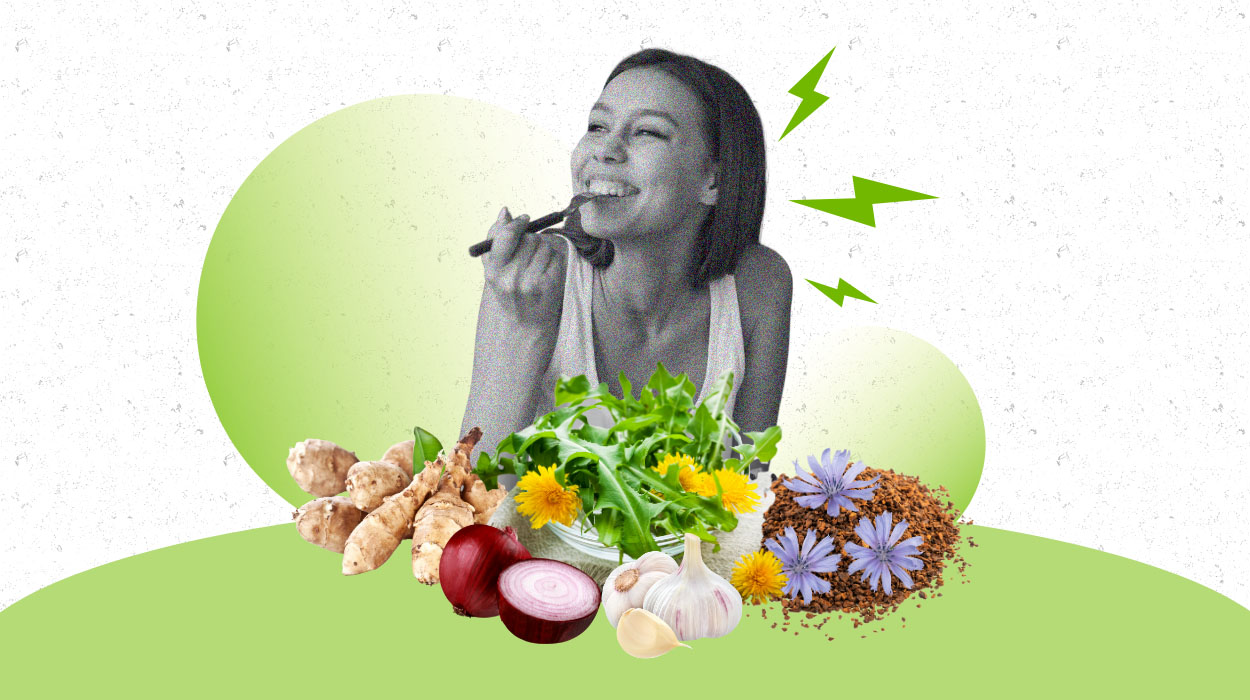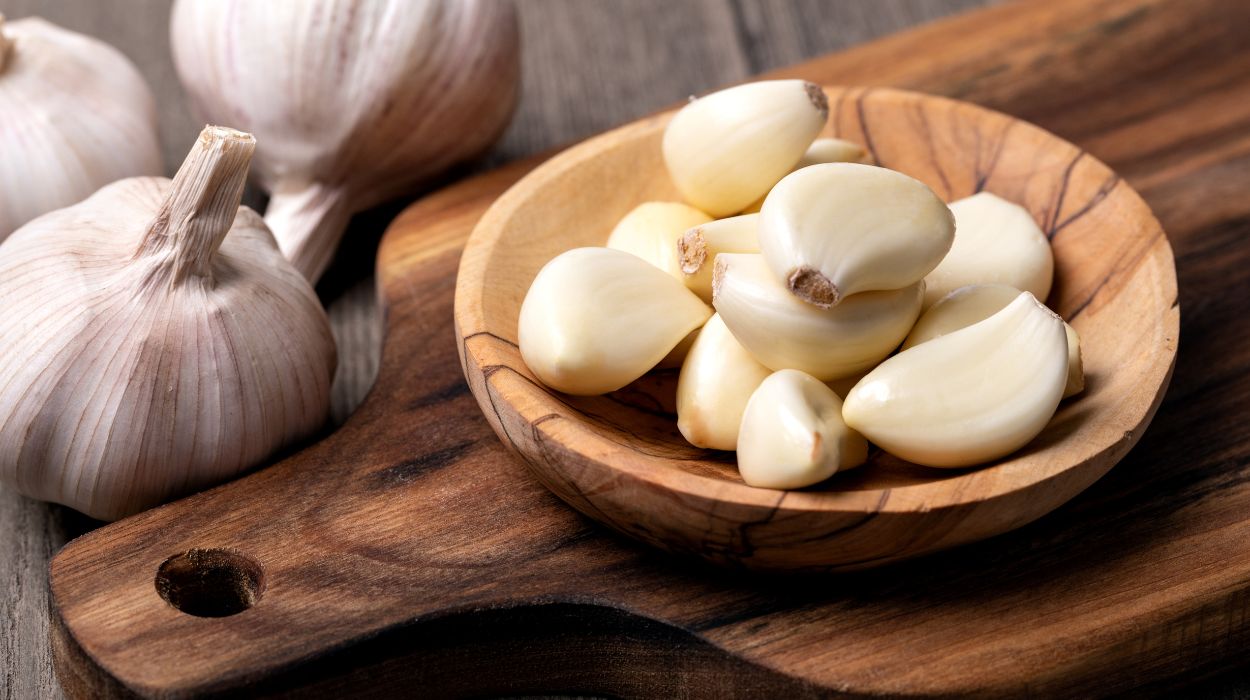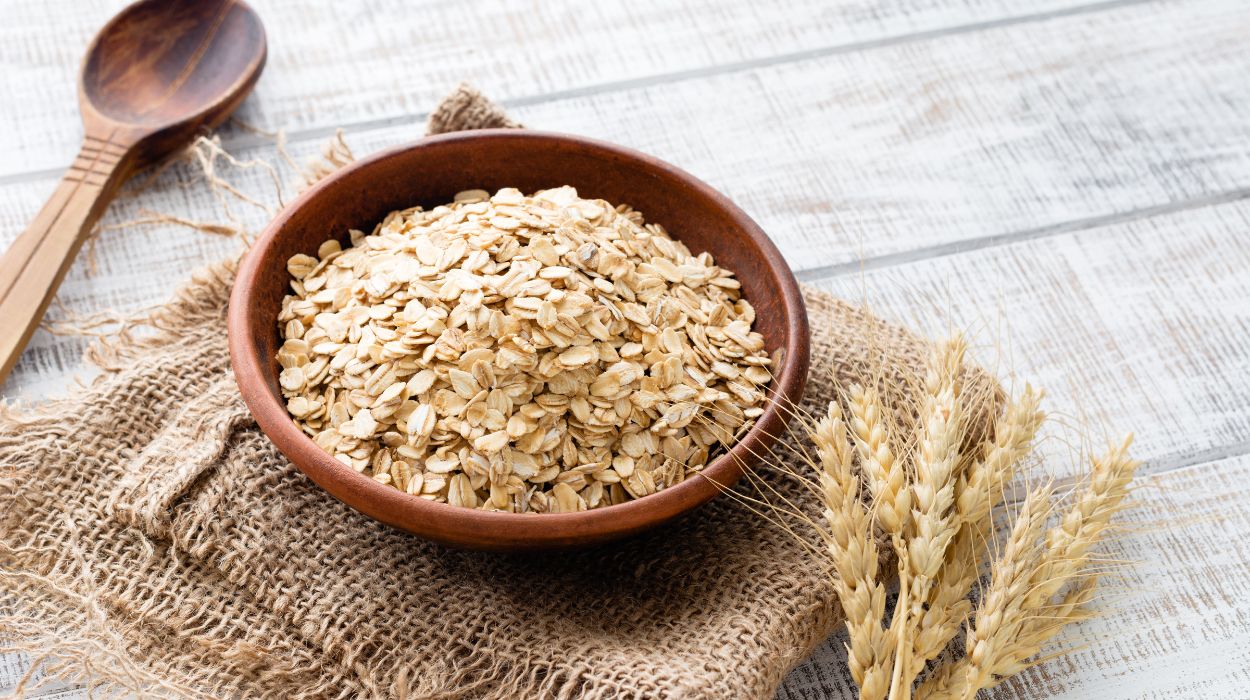 Expert's opinion
Expert's opinion
Expert's opinion
The article is a subjective view on this topic written by writers specializing in medical writing.
It may reflect on a personal journey surrounding struggles with an illness or medical condition, involve product comparisons, diet considerations, or other health-related opinions.
Although the view is entirely that of the writer, it is based on academic experiences and scientific research they have conducted; it is fact-checked by a team of degreed medical experts, and validated by sources attached to the article.
The numbers in parenthesis (1,2,3) will take you to clickable links to related scientific papers.
10 Prebiotic Foods List To Support Your Gut & Digestive Health 2024

Prebiotics are specialized types of dietary fiber that provide health benefits. They can pass through the upper gastrointestinal tract undigested and go on to nourish the good bacteria in your gut. A healthy balance of gut bacteria can benefit your digestive system, immune system, and overall health.
Various prebiotic fibers, including inulin, fructooligosaccharides (FOS), galactooligosaccharides (GOS), and resistant starch, can impact gut health. Several plant foods are particularly rich in these beneficial prebiotics.
There is often confusion between prebiotics and probiotics. While probiotics and prebiotics can both increase good gut bacteria and provide health benefits, probiotics are live microorganisms that can colonize the gut. Prebiotics, on the other hand, provide nourishment for beneficial bacteria.
Prebiotic foods contain non-digestible fibers that feed good bacteria, while probiotic foods contain live good bacteria. Probiotic foods include yogurt, kefir, sauerkraut, kombucha, and miso. Prebiotics and probiotics both have a role in gut health and can work together to provide benefits.
10 Best Prebiotic Foods For Gut Health
The specialized fibers in prebiotic foods can help increase and balance healthy gut bacteria, leading to benefits for digestive and overall health.
- Chicory
- Jerusalem artichoke
- Dandelion greens
- Garlic
- Onion
- Leek
- Chickpeas
- Bananas
- Barley
- Oats
List Of Prebiotic Foods For Better Gut Health
Although humans have consumed foods high in prebiotics since prehistoric times, evidence of their health benefits has come to light only recently.[1] Prebiotic-rich foods include a variety of vegetables, fruits, whole grains, and legumes containing various types of beneficial dietary fibers.
Since prebiotics are derived from plant foods, natural prebiotic foods are vegan. However, some processed foods like cereals, bread, snack bars, or yogurts that have added prebiotics like inulin or chicory root may contain animal products.
To maximize health perks, stick with prebiotic whole foods. In addition to various beneficial fibers, many of these whole foods contain other critical nutrients and antioxidant phytonutrients.
Get ideas for upping your intake with this prebiotic foods list:
Featured Partner

Low-Calorie
Non-GMO
Vegan-friendly
Get Blown Away By Expert-Crafted Formula
Learn More About Colon Broom – one of the quality supplements promoting regular bowel movements, alleviates bloating, and supports healthy cholesterol levels.
Chicory
One of the highest-fiber plant foods available, chicory is a powerhouse of prebiotic inulin. It’s also a source of inulin added to processed foods[2] for texture or fiber.
In culinary use in certain parts of the world, in other areas, it’s more commonly used for chicory root coffee or its inulin[3] extract. Chicory is also a great source of prebiotic FOS.
Jerusalem Artichoke
High in both inulin and FOS, these flavorful veggies can be purchased fresh (and cooked) or canned or frozen. They can be added to a variety of warm or cold dishes. Jerusalem artichokes are a good source of the crucial minerals iron and potassium.
Dandelion Greens
A great source of inulin and FOS, dandelion greens can be eaten raw, on salads or sandwiches, or cooked like other leafy greens. They’re also chock full of nutrients such as vitamin A, vitamin K, and vitamin C and provide several other critical vitamins and minerals. Additionally, they contain beneficial phytochemicals linked with chronic disease prevention.
Garlic

Cloves from this aromatic bulb from the Allium family are used widely to flavor a variety of recipes. High in inulin, garlic also contains multiple phytochemicals with anti-oxidant, anti-inflammatory, anti-microbial, and anti-cancer effects.[4] Consumption of garlic has been associated with lower blood glucose levels, lower lipid levels, and lower blood pressure.[4]
Onion
Also from the Allium family, onions are used widely to flavor savory dishes. They provide both inulin and FOS. Onions contain a similar profile of beneficial phytonutrients to garlic.
Leek
Leeks are also a member of the Allium family and a good source of inulin and FOS. They are similar to onions, but have a milder flavor and work well in soups and dips. They’re an excellent source of vitamin K and a good source of several other micronutrients, including vitamin C and iron.
Chickpeas
Also known as garbanzo beans, chickpeas contain GOS raffinose. In a small study, both chickpeas and raffinose supplements increased levels of beneficial Bifidobacteria in subjects.[5]
Chickpeas are also a good source of iron. They can be purchased canned or dried and added to soups, stews, salads, or blended into hummus or other dips. They also make a great snack when roasted.
Bananas
One of the best fruit sources of prebiotics, bananas contain both FOS and inulin. Unripe bananas also contain resistant starch, types of starch[6] that are resistant to digestion but function as prebiotics in the gut. Bananas are an excellent source of vitamin B6, a good source of vitamin C, and provide potassium and other minerals and vitamins. They make a tasty and portable snack and are great when sliced into cereals and fruit salads.
Barley
This whole grain contains both inulin and FOS. Barley is also one of the best sources of B-glucan, a soluble fiber linked to lower cholesterol levels.[7]
Researchers have theorized that B-glucan may also have prebiotic effects. A small study[8] that added whole grain barley to the diets of healthy young adults found that it increased their healthy gut bacteria, lowered post-meal glucose and insulin levels, and improved inflammatory and immune markers.
Barley is also full of micronutrients; it’s an excellent source of iron, magnesium, selenium, phosphorus, and several B vitamins. Barley can be cooked and added to soups, salads, and other dishes.
Oats

Oat also contains inulin[9] and like barley, is a top source of B-glucan, shown to lower levels of LDL cholesterol. Raw oats also provide resistant starch. Consumption of oats has been found to increase friendly gut bacteria.
Additionally, oats are an excellent source of several crucial micronutrients, including iron, magnesium, and B vitamins. Oats make a great addition to breakfast, hot or cold, in oatmeal, overnight oats, granola, or muesli. They also work well in baked goods and other recipes for additional texture and fiber.
Benefits Of Prebiotics
Overall, eating more fiber, including prebiotic fibers, is associated with various health benefits. Adequate fiber intake[10] can reduce constipation and aid blood sugar control. It can also increase satiety at meals, helping with weight control.
In addition, fiber can lower the risk of cardiovascular disease. In particular, eating more soluble fiber is linked with lower LDL cholesterol, the “bad” cholesterol.
Observational studies have found that eating more plant foods and dietary fiber is associated with a greater diversity of bacteria in the gut, whereas consuming more animal products and highly processed foods is linked with a lower diversity of gut bacteria.[11]
Feeding Good Bacteria
Prebiotic benefits go beyond those of a healthy diet. Consumption of prebiotics feeds beneficial healthy bacteria, leading to a healthier and more balanced gut microbiome.[12] The gut microbiome comprises trillions of microorganisms colonizing the human digestive tract.
A balanced microbiome is critically important for digestive, immune function, and metabolic health. But how do prebiotics help?
- Prebiotics target beneficial gut bacteria like Lactobacilli and especially Bifidobacteria, which is plentiful in the colon. A study in which healthy adults increased their intake of vegetables rich in the prebiotic inulin found that they had increased levels of Bifidobacteria.[13]
- Consumption of prebiotics, ideally a mixture[14] of types, increases the diversity of healthy gut bacteria.
- Prebiotics affect the growth and activity of beneficial gut bacteria, including their ability to support immunity, maintain the gut barrier against harmful bacteria, and produce beneficial substances, including short-chain fatty acids (SCFAs).
- Consumption of prebiotics increases SCFA production. SCFAs like acetate, propionate, and butyrate help regulate water and nutrient absorption, support the gut barrier and ward off harmful bacteria and other gut pathogens. They also support immunity and provide anti-inflammatory effects. Preliminary research indicates that butyrate may potentially be protective against colon cancer.
Digestion
Prebiotics may improve the digestion of certain nutrients. Research has found that the prebiotics inulin and FOS increased calcium absorption in teenagers. The prebiotic inulin may help relieve constipation.
In some studies, supplementation with the prebiotics inulin and GOS reduced the incidence of traveler’s diarrhea in subjects traveling to high-risk areas. A few studies of patients with irritable bowel syndrome found that GOS supplements reduced some of their symptoms.
Immunity
Some studies have found that prebiotics enhanced subjects’ immune responses to vaccines and infections.
Metabolic Health
Some research has associated prebiotic intake with lower weight, improved satiety, and a reduced overall calorie intake. Researchers have theorized that these effects are due to the increased production of SCFAs stimulating gut hormones associated with satiety.
Cardiovascular Health
Some research indicates that prebiotics can reduce cardiovascular inflammation. Research trials providing subjects with supplements of FOS and inulin fiber found reductions in their LDL cholesterol, although other studies have not found these effects.
Mental Health And Cognition
A few studies have found improved mood or memory in subjects given prebiotic supplements.
Note: Many of the studies on the health impacts of prebiotics used prebiotic supplements that typically provide a larger dose than the prebiotics found in individual foods. However, eating a variety of prebiotic-rich foods may offer similar health benefits.
Potential Side Effects Of Prebiotics
Some prebiotic fibers, like inulin, are less well tolerated than others and can cause gastrointestinal distress. Symptoms such as gas, bloating, and changes in bowel habits may occur, particularly when consumed in large amounts.
To limit digestive upset, slowly increase any new fiber sources in your diet, including prebiotics, and ensure you drink plenty of fluids to help move the fiber through your digestive system.
Some individuals may be more sensitive to the side effects of prebiotics, such as those with irritable bowel syndrome or other gastrointestinal conditions. If you have a chronic digestive condition, consult your healthcare provider or dietitian before increasing your intake of prebiotic foods.
The Bottom Line
Consuming more prebiotics can grow beneficial gut bacteria, leading to better digestion and various other health benefits. Choosing a variety of whole plant foods with prebiotics can lead to a more balanced healthy gut microbiome while providing other healthful nutrients and phytonutrients. Increasing new prebiotic fiber sources gradually can help prevent bothersome digestive side effects to help you reap the biggest benefits of eating these foods.
+ 14 sources
Health Canal avoids using tertiary references. We have strict sourcing guidelines and rely on peer-reviewed studies, academic researches from medical associations and institutions. To ensure the accuracy of articles in Health Canal, you can read more about the editorial process here
- Slavin, J. (2013). Fiber and Prebiotics: Mechanisms and Health Benefits. Nutrients, [online] 5(4), pp.1417–1435. doi:10.3390/nu5041417.
- Dorna Davani-Davari, Manica Negahdaripour, Iman Karimzadeh, Mostafa Seifan, Milad Mohkam, Seyed Jalil Masoumi and Aydin Berenjian (2019). Prebiotics: Definition, Types, Sources, Mechanisms, and Clinical Applications. Foods, [online] 8(3), pp.92–92. doi:https://doi.org/10.3390/foods8030092.
- Puhlmann, M.-L. and de Vos, W.M. (2020). Back to the Roots: Revisiting the Use of the Fiber-Rich Cichorium intybus L. Taproots. Advances in Nutrition, [online] 11(4), pp.878–889. doi:10.1093/advances/nmaa025.
- El-Saber Batiha, G., Magdy Beshbishy, A., G. Wasef, L., Elewa, Y.H.A., A. Al-Sagan, A., Abd El-Hack, M.E., Taha, A.E., M. Abd-Elhakim, Y. and Prasad Devkota, H. (2020). Chemical Constituents and Pharmacological Activities of Garlic (Allium sativum L.): A Review. Nutrients, [online] 12(3), p.872. doi:10.3390/nu12030872.
- Fernando, Hill, J.E., Zello, G.A., Tyler, R.T., Dahl, W.J. and Van, A.G. (2010). Diets supplemented with chickpea or its main oligosaccharide component raffinose modify faecal microbial composition in healthy adults. Beneficial Microbes, [online] 1(2), pp.197–207. doi:https://doi.org/10.3920/bm2009.0027.
- DeMartino, P. and Cockburn, D.W. (2020). Resistant starch: impact on the gut microbiome and health. Current Opinion in Biotechnology, [online] 61, pp.66–71. doi:10.1016/j.copbio.2019.10.008.
- Xu, D., Feng, M., Chu, Y., Wang, S., Shete, V., Tuohy, K.M., Liu, F., Zhou, X., Kamil, A., Pan, D., Liu, H., Yang, X., Yang, C., Zhu, B., Lv, N., Xiong, Q., Wang, X., Sun, J., Sun, G. and Yang, Y. (2021). The Prebiotic Effects of Oats on Blood Lipids, Gut Microbiota, and Short-Chain Fatty Acids in Mildly Hypercholesterolemic Subjects Compared With Rice: A Randomized, Controlled Trial. Frontiers in Immunology, [online] 12. doi:10.3389/fimmu.2021.787797.
- Inés Martínez, Lattimer, J.M., Hubach, K.L., Case, J.A., Yang, J., Weber, C., Louk, J., Rose, D.J., Gayaneh Kyureghian, Peterson, D.A., Haub, M.D. and Walter, J. (2012). Gut microbiome composition is linked to whole grain-induced immunological improvements. The ISME Journal, [online] 7(2), pp.269–280. doi:https://doi.org/10.1038/ismej.2012.104.
- Carlson, J.L., Erickson, J.M., Lloyd, B.B. and Slavin, J.L. (2018). Health Effects and Sources of Prebiotic Dietary Fiber. Current Developments in Nutrition, [online] 2(3). doi:10.1093/cdn/nzy005.
- Slavin, J.L. (2013). Fiber and Prebiotics: Mechanisms and Health Benefits. Nutrients, [online] 5(4), pp.1417–1435. doi:https://doi.org/10.3390/nu5041417.
- Berding, K., Vlckova, K., Marx, W., Schellekens, H., Stanton, C., Clarke, G., Jacka, F., Dinan, T.G. and Cryan, J.F. (2021). Diet and the Microbiota–Gut–Brain Axis: Sowing the Seeds of Good Mental Health. Advances in Nutrition, [online] 12(4), pp.1239–1285. doi:10.1093/advances/nmaa181.
- Thursby, E. and Juge, N. (2017). Introduction to the human gut microbiota. Biochemical Journal, [online] 474(11), pp.1823–1836. doi:10.1042/bcj20160510.
- Hiel, S., Bindels, L.B., Pachikian, B.D., Kalala, G., Broers, V., Zamariola, G., Chang, B.P.I., Kambashi, B., Rodriguez, J., Cani, P.D., Neyrinck, A.M., Thissen, J.-P., Luminet, O., Bindelle, J. and Delzenne, N.M. (2019). Effects of a diet based on inulin-rich vegetables on gut health and nutritional behavior in healthy humans. The American Journal of Clinical Nutrition, [online] 109(6), pp.1683–1695. doi:10.1093/ajcn/nqz001.
- Hughes, R.L., Alvarado, D.A., Swanson, K.S. and Holscher, H.D. (2021). The Prebiotic Potential of Inulin-Type Fructans: A Systematic Review. Advances in Nutrition, [online] 13(2), pp.492–529. doi:10.1093/advances/nmab119.



